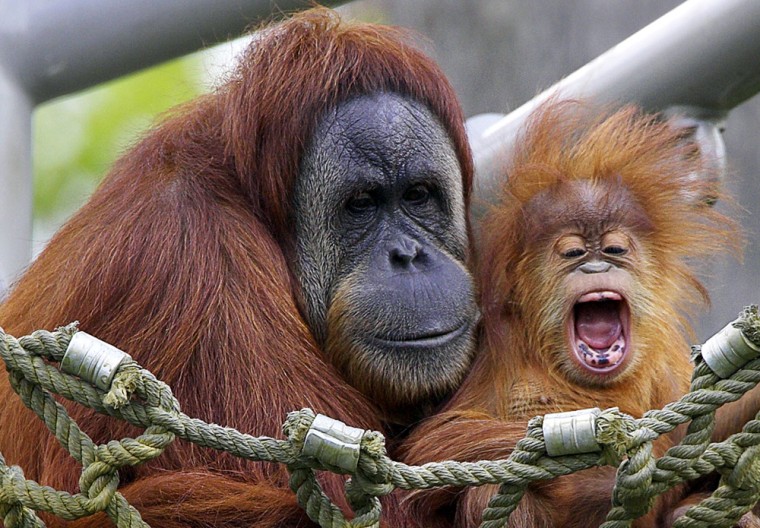Human activities such as hunting and logging have driven nearly one quarter of the world’s primate species — man’s closest living relatives — to the brink of extinction, according to a new report.
Without concerted action, great apes such as the Sumatran orangutan of Indonesia and the Eastern gorilla of central Africa are at risk of disappearing, according to the report released Thursday by the World Conservation Union, the International Primatological Society and Conservation International.
“If we do nothing ... as many as one-quarter of all today’s primates will be dead within 20 years,” it says.
It said Madagascar and Vietnam each have four primates on the list of 25 most endangered. Brazil and Indonesia have three. Sri Lanka and Tanzania have with two each. Colombia, China, Cameroon, Ivory Coast, Equatorial Guinea, Ghana, Kenya, Nigeria, Rwanda, Uganda, and Congo have one each.
“The situation for these primates is down to the wire in terms of extinction,” said Russell Mittermeier, president of Conservation International. “If you took all the individuals on the list and gave them a seat in a soccer stadium, they probably wouldn’t fill it,” he said from Madagascar, where primate specialists are meeting.
150 species at risk
While listing 25 species as most endangered, the report said that one in four of the 625 primate species and subspecies are at risk. Fifty experts from 16 countries cited deforestation, commercial hunting for meat and the illegal animal trade — including for use in traditional medicines — as the biggest threats.
Primates are eaten in west and central Africa, where they are a delicacy, while in parts of Asia their body parts are used as medicines.
The golden-headed langur of Vietnam and China’s Hainan gibbon number only in the dozens. The Horton Plains slender loris of Sri Lanka has been seen just four times since 1937. Perrier’s sifaka of Madagascar and the Tana River red colobus of Kenya are now restricted to tiny patches of tropical forest, leaving them vulnerable to rapid eradication, the report said.
The threat is especially perilous in Madagascar, one of the planet’s biodiversity hotspots that has lost most of its original forest cover, the study said.
“More than half its lemurs, none found anywhere else in the world, are threatened with extinction. Without immediate steps to protect these unique creatures and their habitat, we will lose more of our planet’s natural heritage forever,” Mittermeier said.
10 of most endangered in Asia
By region, the list includes 10 primate species and subspecies from Asia, seven from Africa, four from Madagascar, and four from South America. All the animals live in areas declared biodiversity hotspots which cover just 2.3 percent of the planet but are home to more than half all terrestrial plant and animal diversity.
The report said that the first extinction among African primates was expected to occur among the red colobus species, some of which have not been sighted for decades and may already be extinct.
Mittermeier said more resources were needed to set up protected areas and prevent hunting. He said several species had been taken off the most endangered list after successful conservation programs in Madagascar — where authorities have recognized that lemurs are vital to the country’s fledgling tourist industry — and Brazil.
The report follows similar studies in 2000 and 2002. The groups said 15 of the primates on the new list, including the Sumatran orangutan of Indonesia and the northern muriqui of Brazil, are "three-time losers" for having appeared on all three lists.
Seven are new additions, and three appeared once before.
